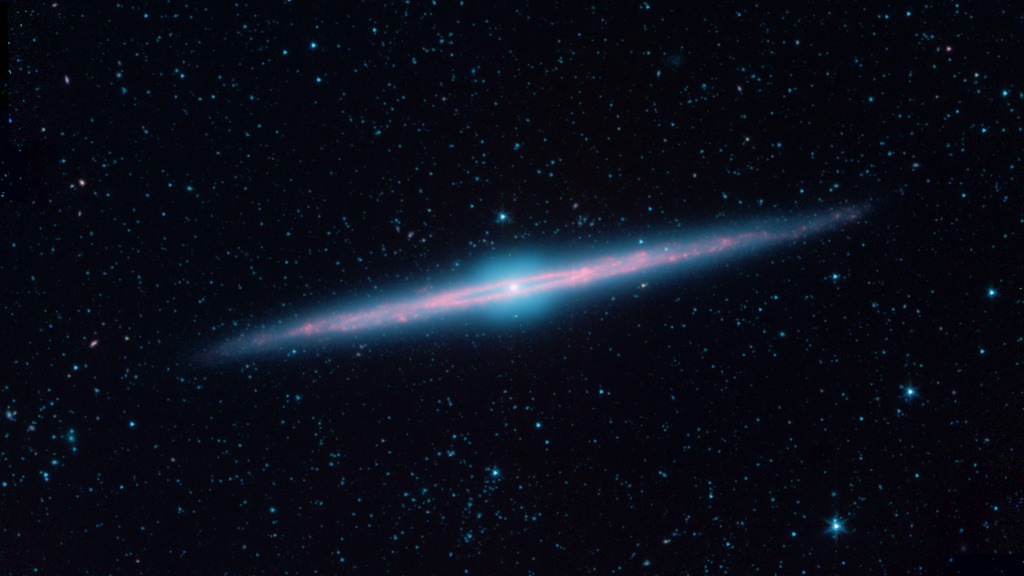
Credit: NASA/JPL-Caltech
Observation • August 21st, 2023 • ssc2023-02
ssc2023-02
Spiral galaxies are as varied as snowflakes, and almost as flat. This becomes clear when one observes a galaxy seen edge-on, as with NGC 4565, also known as the “Needle Galaxy.” This infrared image, made with archival data from the cryogenic phase of NASA’s Spitzer Space Telescope, reveals the striking geometry in this spiral galaxy more clearly than with visible light.
The blended glow from hundreds of billions of stars is seen here as a blue haze, representing the shorter wavelengths of infrared light. The flattened disk of dust clouds pops out at longer wavelengths, shown in red. The dust is most vivid along the inner ring of this galaxy, which from this angle that is a few degrees away from edge-on, appears as a narrow ellipse that looks much like the eye of a two-sided needle.
The starlight also reveals clues about what this galaxy would look like if viewed from above. The squared-off, “boxy” bulge in its middle has led astronomers to deduce that this galaxy has a prominent bar-like structure within the inner dust ring. Many spiral galaxies have such bars, which arise when the inner population of stars are shifted into non-circular orbits. Even our own Milky Way galaxy has a stellar bar at its center which produces a similar boxy pattern of stars.
NGC 4565 is located in the southern constellation of Coma Berenices and lies about 50 million light years away. It is almost 16 arcminutes across, which is equivalent to roughly half the width of the full moon. It is a large galaxy, around twice the size of the Milky Way, and it is one of the brightest members of the Coma I Group of galaxies.
In this image, infrared light at wavelengths of 3.6, 4.5, and 8.0 microns is displayed as blue, green, and red, respectively.
About the Object
- Name
- NGC 4565 • Needle Galaxy
- Type
- Galaxy > Type > Spiral
- Galaxy > Type > Barred
- Galaxy > Type > Ring
- Distance
- 50,000,000 Light Years
Color Mapping
| Band | Wavelength | Telescope |
| Infrared | 3.6 µm | Spitzer IRAC |
| Infrared | 4.5 µm | Spitzer IRAC |
| Infrared | 8.0 µm | Spitzer IRAC |
Astrometrics
- Position (2000.0)
- RA =12h 36m 24.0s
- Dec = 25° 59' 1.2"
- Field of View
- 21.3 x 12.0 arcminutes
- Orientation
- North is 33.7° right of vertical



